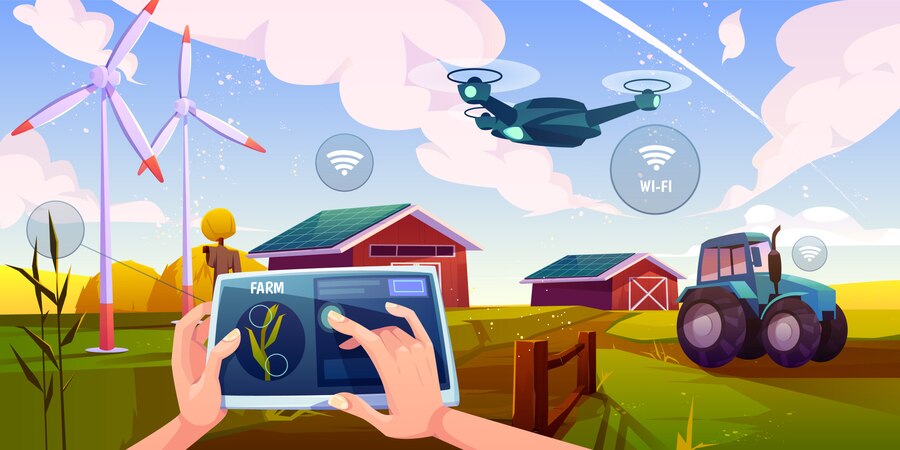In recent years, technology has played a significant role in transforming agricultural practices worldwide. From precision farming to genetic engineering, innovations in agriculture have the potential to address pressing challenges such as food security, climate change resilience, and resource efficiency. Here, we’ll explore the role of technology and innovation in shaping the future of agriculture.
1. Precision Farming:
Precision farming, also known as precision agriculture, involves using technologies such as GPS, drones, sensors, and data analytics to optimize inputs like water, fertilizer, and pesticides. By precisely targeting resources based on variations in soil, weather, and crop conditions, farmers can maximize yields while minimizing environmental impacts. Precision farming also enables better decision-making, reducing costs and increasing efficiency.
2. Genetic Engineering and Biotechnology:
Genetic engineering and biotechnology have revolutionized crop breeding and production systems. Genetically modified organisms (GMOs) can offer traits such as pest resistance, drought tolerance, and increased nutritional value. While controversial, GMOs have the potential to enhance crop resilience to climate change, reduce chemical inputs, and improve yields. Biotechnology also encompasses techniques like gene editing, which allows for precise modifications without introducing foreign genes.
3. Vertical Farming and Indoor Agriculture:
Vertical farming and indoor agriculture involve growing crops in vertically stacked layers or controlled environments such as greenhouses and hydroponic systems. These methods utilize artificial lighting, climate control, and advanced cultivation techniques to produce food year-round in urban areas or regions with limited arable land. Vertical farming can reduce water usage, pesticide use, and transportation emissions, making it a promising solution for sustainable food production in densely populated areas.
4. Robotics and Automation:
Robotics and automation technologies are increasingly being used in agriculture to perform tasks such as planting, harvesting, and weed control. Autonomous vehicles, drones, and robotic arms can operate with precision and efficiency, reducing the need for manual labor and increasing productivity. These technologies also enable continuous monitoring of crops and livestock, allowing for early detection of issues and timely interventions.
5. Blockchain and Supply Chain Transparency:
Blockchain technology is being leveraged to improve transparency and traceability in the agricultural supply chain. By recording every transaction and movement of goods on a decentralized ledger, blockchain can enhance food safety, quality assurance, and fraud prevention. Consumers can trace the origins of their food products, verify authenticity, and support sustainable and ethical farming practices.
In conclusion, technology and innovation have the potential to revolutionize agriculture and address the challenges of feeding a growing population while protecting the environment. However, it’s essential to ensure that these technologies are accessible, affordable, and deployed responsibly to benefit farmers, consumers, and ecosystems alike.
Stay tuned for more insights on other critical topics shaping the future of agriculture and sustainable food systems.
